[1]“That’s the second time you’ve tried to kill me today…oh come on it was jus a little bomb”
How are women represented differently now compared with the past and negative stereotypes paying particular attention to ‘Mr and Mrs Smith’?
When considering the word ‘representation’ words such as ‘label’, ‘portrayed’, ‘image’, and ‘constructed’ are a few that come to mind. Representation is a stereotype, which categorizes a group of people by only a few characteristics. Stereotypes between gender roles have dramatically changed within today’s society, as women today challenge themselves in taking up a range of opportunities which allows them to express themselves on how they would like to. The action film genre is a typically male dominated, where men take upon leading masculine roles, which entail playing the active part, however women were to take on a more passive role and were only their to be looked upon as ‘sex objects’ as Mulvey states ‘why are so many women in films showgirls, strippers etc [2] However, award winning, action comedy film ‘Mr and Mrs Smith’ (2005,Doug Liman, USA) seem to play around with the traditional roles. Both Angelina Jolie and Brad Pitt undertake challenging roles where Jolie plays the part of a ‘dominant powerful woman’, Brad Pitt still plays the part of an active character although seems to be passive towards Jolie, which is considered to be bizarre as you would not usually see this role change, as both characters have similar roles which represent the change in society as well as them seen to be more equal. ‘Mr and Mrs Smith’ have significantly portrayed women in a more positive way where they are seen to be up taking the active role in being dominant and are not being ‘labelled’ to the fixed stereotype of a woman.
By tradition, ‘women are constantly portrayed in the media as sex objects of the male gaze’ [3], Women have had no free control of there own actions this would include having control of their own the way they present themselves, the way they lead their lives and also having control over there own bodies. There restriction in society was based on the generalised ‘stereotyping’ on women, so this did not allow them to break free from the Marxist view on women as they were generalised and discriminated, this then led them into being put into groups, women were the ones that were in the inferior social group who could not be left on there own to make there own decisions in society. Women have been under represented in films as it was only ok for a woman to be in a film depending on what society she had come from, basing it on how the society recognised women. ’20 to 35 per cent of characters were female in the 1950’s to 70’s’[4] but the number of women on screen then increased by double by the 1980’s but then women were still restricted by the ‘glass ceiling’ as there were more men than women on screen.
However, women did not quit as the society was changing due to the Second World War, which then entailed there being a need for women more as the men were of fighting in the war. Women were encouraged to take on jobs at the factory to take their place working in factories. This then gave more independence and women didn’t feel as if they had to follow any rules, which then led to them not feeling as if they had to do as there husbands said when they came back from war.
Their has been a generalised representation on women as they either have been classified as ‘the whore’ which is the passive, inferior character and allows society to sexually objectified and being objects of the ‘male gaze’, ‘the Madonna’ is the second group which shows women to be conducting domestic tasks which include cooking cleaning and being portrayed as a good ‘housewife‘. This has been an idealistic view of the dominant male audiences. Women have often been stereotyped as a ‘dumb bimbo’ or the ‘housewife’ 5 which then links back to the Marxist views and how they categorise women, this then re impose the humiliating views upon their position in society.
‘Pretty woman, 1990, Marshall Gary’ is a major example of this as it was an introduction to try to represent women in roles typically given to men. As Julia Roberts (Vivian Ward) has been represented to be ‘the whore’ which re enforces the idealistic views of the dominated male? Julia represents the typical stereotype of a woman, degraded and being exploited as she plays the role of a prostitute in the film, which is the typical male preference as it encourages the ‘male gaze’ because the woman has no control of her own body and actions’ ‘eye candy to appease the male gaze’ 6. The male Richard Gere (Edward Lewis) in the film typically plays the rich, middle class white male, associating with the stereotyped male that would approach a ‘prostitute’ but in this case he approaches her in order to save her as he is only a man in a legal but hurtful business needs an escort for some social events, and hires a beautiful prostitute he meets... only to fall in love. So it’s typically a male dominated society as he’s in control of what he wants. Julia Roberts plays a woman that can’t chose what she does it’s the fact that she has to perform these actions because it’s the only way to see light, she is typically ‘promiscuous, stupid, uneducated and helpless’. Throughout the film she has been typically represented to be the woman that is living in a dangerous lifestyle, which is what men want theoretically, but then it can be argued that she has adopted a male tradition, as you would see the male within the similar position but it would be ‘pimping’ his women.
Women’s roles have changed dramatically since the early 1970’s when the activists were battling for women’s liberation and equal opportunities at a time of great unrest and social upheaval for many social groups. A lot of the modern film represents this especially as the 21st century celebrates female sovereignty and their position in being the same towards men in society. The society norms and values have been broken as films such ‘Mr and Mrs Smith’ promotes the rising and change in the female character, as it highlights the female dominance and also challenges the patriarchy society.
‘My dear girl, don't flatter yourself. What I did this evening was for Queen and country’ Thunderball, 1965, Young Terence 7. The James bond collection has distinctive but then very typical style in which they represent the women in their films. Throughout the series of films, women were objectified as ‘sex objects’ for the male’s viewing pleasures. In the films, women would walk around in ‘revealing’ clothing which is used to seduce the men around them but in particular Bond. The stereotype that follows up would be the A stereotype of portraying an unmarried female who needs to be saved. This is similarly Snow White (Show White and the seven Dwarfs), Sleeping Beauty (Sleeping Beauty), Princess Zelda (The Legend of Zelda as they are fantasy Disney stories8 but they are in need of a male to save them as they are at there weakest, this then emphasises the traditional narrative where women conform to the ‘damsel and distress’ stereotype.
Angelina Jolie takes the challenge to take on a role in which consists of breaking the rational qualities of an action film, as she plays the woman that seems to be lonesome on a holiday in which she is hiding from the police that are after her, this indicates the that women are being in control of their own actions as she is clearly ‘unattached’, we could argue whether she is independent as when the police are looking her Brad Pitt is waiting at the bar as a woman does and she then approaches him which is very ironic as you wouldn’t see this role reversal between the sex’s. This then represents the damsel is distress as she walks up to Brad Pitt in order to get saved by the police ‘she’s with me’9. Brad Pitt seems to have taken the role of the male that saves the ‘damsel in distress’, which shows that Angelina Jolie has to be rescued by the male (Brad Pitt) show the fact that she is supposedly a women that is independent shows that she does need a male to be by her side.
Historical text ‘Bonnie and Clyde, 1967, use the same conventions as bonnie seems to be an independent she seems to be in the driver’s seat, this could be portrayed as a way of taking control in the relationship and by her controlling the gear stick it shows that she’s in control of the ‘phallic symbol’ which is big, long and hard which could be the substitute for the penis at this point we know that Bonnie has ownership over Clyde, but then during the car journey they have an argument which then Clyde decides to walk out of the car, at this point we see that Bonnie is afraid of losing him and so she runs after him as she knows that he is ‘the only one’ for her. This emphasizes the fact in order for women to succeed; they need support from the opposite sex, which links back to the traditional and more aggressive action films.
Angelina Jolie represents two kinds of women in the film, She firstly plays the ‘domestic’ woman, who cooks and cleans for her husband making sure everything is perfect, and she plays a woman that’s secretive and commits activities that you would not associate with a woman. Jolie has her hair clipped back in curls when she’s preparing food in the kitchen for her husband brad when he comes home, this is very similar to the adverts that were produced in the 1960’s when the woman was done up but in the kitchen ‘now if you can’t get to his heart, there’s no going wrong with a home baked pie’ ‘Using women in the kitchen and Bather room adverts’10 clearly we see a emphasise on that women are only good for one thing and that’s performing domestic activities in the kitchen. Jolie conforms to this as she is in the kitchen making the food but the difference is that she’s very strong minded about it as the advert women worship their husbands whereas Jolie does the exact opposite. Remarks such as ‘ Brad- would you pass the salt honey’ and her replying ‘it’s in the middle of the table’11 shows that she does not worship here husband at all, Jolie takes the role of being the one in control which shows that the stereotype has been challenged by Jolie.
Jolie at one point is dressed in a black coat with her hair tied back, this is when brad asks her ‘you going out’ and she replies ‘only for a quick one’ 12 usually the woman would be asking the question to the male but in the case they have switched the roles showing the women are dominant and independent. The conations of the ‘quick one’ are sexual as it could represent that she may well be going out for a bit of fun. At this point she leaves the house. She approaches a restaurant/club, where she is then approached by a male, which he then opens the doors for her, showing the dominance, and respect she has. He leads he into a room in which he leaves her waiting, at this point Jolie has a low angle shot to emphasise he presence and dominance. A male then enters and smiles she drops her bags, fast, she then undoes her buttons and rips of her jacket revealing a ‘strippers out fit’ the conations for this are that she has conformed to the’ male gaze’ as the clothing is tight and revealing. Jolie is also wearing red lipstick as well as her outfit being black and latex. Red connoting danger this may well represent her life, as she is a woman living a dangerous lifestyle. ‘In film women is seen as other, as an object not a subject. In a way she represents the unconscious of the male because she is always the object he is looking at and never is able to speak for herself’13 Laura mulvey says that the woman is there seen as the other and she has no say in what she is representing, but I think Jolie represents a woman that knows her positions in society and she believes that she is the one In control as in the scene in which she is seen as a ‘stripper’ she the one holding the ‘whip’ which could also represent the phallic symbol, and is a substitute for the penis, and by Jolie whipping the male shows she’s got ownership of it.
In ‘Bonnie and Clyde’ Bonnie clearly shows a role reversal as she takes on a challenge where she is in the possession of money and it’s distributed between four people and when she receives the less amount she ‘s not passive towards Clyde as she shows her authority and makes him realise that he’s not right in giving her less amount, ‘I did as much work as she did, I should get more’14‘Girl power’15. Bonnie now has shown her girl power, which shows that she’s not letting anyone take control of her life even if it’s Clyde, as she knows where she is right.
Stereotypes being challenged in ‘Mr and Mrs Smith’ when Jolie is an assassin killing people, blowing up things, jumping and running, sliding down ropes from tall buildings. This then feeds the woman audience, pleasures as the film demonstrates more of a woman in control and showing authority perspective. Jolie portrayed being better than men, this then encourages the positive recognition with her.
‘Mr and Mrs Smith’ obviously challenges Laura Mulveys’ theory ‘Men as the dominant group have been the looker (the subjects; women the objects)’ her theory to be out dated as women are more the dominant and controlling one’s. Angelina Jolie has the characteristics of a male in the film.
Another recent film, although not an action film is ‘Erin Brockovhich, Steve soderbergh, 2000’. Is one of the films that represents the woman as a strong-minded character, starring Julia Roberts. She has the characteristics of a male, successful as she works in the way she wants, being herself and not taking orders from no one, as well as that being sexy too. However, she portrays a strong, feminist character’ she’s in a interview and she’s telling the male interviewee that ‘I like what you’ve done with you’re office’ this clearly shows that even though she is playing a strong minded character she has to still please the male to linger him in giving her a job.
We are almost made to believe that society is changing especially for the role of women, but the question is that is it really changing or is it what women actually want? Even though ‘Mr and Mrs Smith’ portrays the woman in a changed light, we could say that the film was more to do with the success of ‘detective and assassin’ fans and not to do with the movement of women in society. Jolie plays a more ‘ cross gender appeal’16 Where the female audience are attracted to her for being a confident, intelligent women allowing her to be their role model but t the same time the male audience can be seen to be taking up on the idea of women actually being accepted to perform the same roles as they do and they then are forced to undergo ‘cross gender identification’.17
Furthermore, even though women are seen to be breaking free from the stereotype they will still overcome the fact the glass ceiling is still at present, as the more leading sex will always remain with the power, showing the patriarchal society. The women are seen either to be the main or supporting role as the first thing that we recognize is the presence and sexual charm ‘She is a failure if she is not beautiful’18. Such examples include ’Kill Bill, Quentin, Tarantino (2003) with Uma Thurman, ‘Tomb Raider, Simon West, 2001) with Angelina Jolie and further. The sexual attracted gaze is available for the male audience, but then argue that the female also are ‘forced to objectify’ 19 as they are placed as the one that is in the trap of ‘the gaze’.
Women may need to revert to the masculine beliefs in order to succeed in society. As women can not succeed without having masculine qualities, this may way lead to the respect from the male audience to as they will then accept the women only because they are used to being the one in control and having a woman perform the way in which they are used to is acceptable.
In close, it is quite obvious that their has been a turnaround in society especially through Angelina Jolie’s representation in ‘Mr and Mrs Smith and also along with the other. As she is characteristically pinched away from the typical female role of the ‘damsel in Distress’ as she challenges the typical stereotypes of a woman. The film indicates the woman, as she was known to be playing the one ‘inferior and passive’ but know has taken up the centre role and also who have control of what happens. There are also many other strong female characters in the film such as Uma Thurman, where she uses the sword that she uses to fight in order to kill people around her.
Overall, Mulvey’s theory of active/male and passive/female is becoming less applicable as normal Hollywood films are moving away from there predictable narrative structure and are allowing women to proceed and become more dominant in society as they are played leading roles and taking up challenging roles in order to succeed. However, there are still limits that women have to be careful of as the glass ceiling still seems to be present in society and they are firmly attached in our allegedly after feminist society.
Word count: 3,183
[1]Mr and Mrs Smith, 2005, Doug, Liman
[2] The gaze and visual pleasure and narrative cinema’ -Laura Mulvey
[3] Representation of women handout
[4] Gauntlet, David, ‘Media, Gender and identity’, 2002.
5 Representations of women, pg 82
6 Mulvey, Laura, ‘the gaze’ pg 109
7 Thunderball, 1965, Young Terence -http://www.imdb.com/title/tt0059800/quotes
8 IBMD- Disney
9 ‘Mr and Mrs smith’- IBMD- QUOTES
10 Gauntlet, David – media, gender and identity.
11 ‘Mr and Mrs smith’- IBMD- QUOTES
12 ‘Mr and Mrs smith’- IBMD- QUOTES
13 Mulvey, Laura, ‘the gaze’
14 Imbd - bonnie and Clyde quotes
15 Mucer, Campbell, Jervis and Lewis (2001)- Media common concern about ‘ladettes’
16 William, Kevin (2003) ‘understanding Media Theory’, pg. 134
17 Clover, Carol ‘Men, Women and chainsaws’
18 . Germaine, Greer ‘The whole woman’
19 Duttin, Rayner, and Sullivan (2003) ‘Studying the media’.
Thursday 7 February 2008
Subscribe to:
Post Comments (Atom)
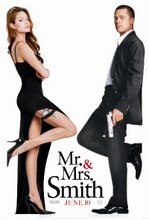
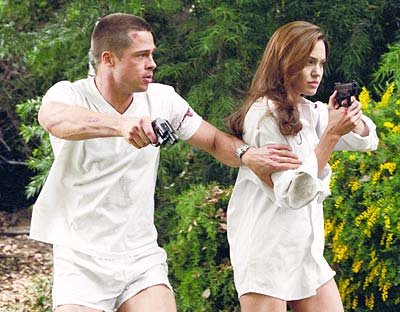
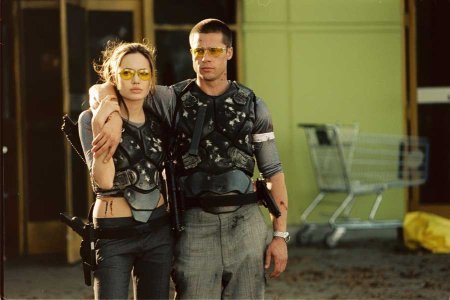

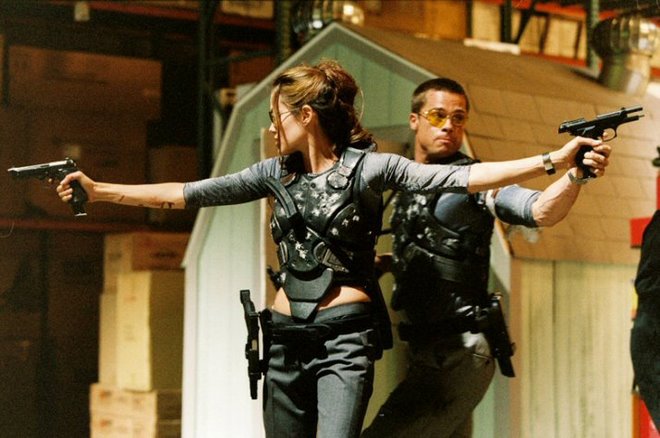
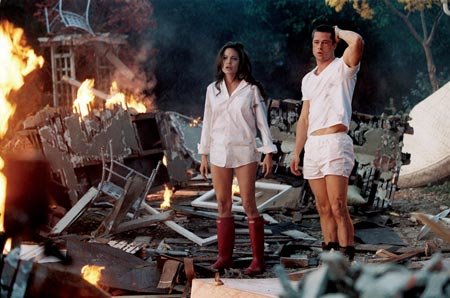
No comments:
Post a Comment